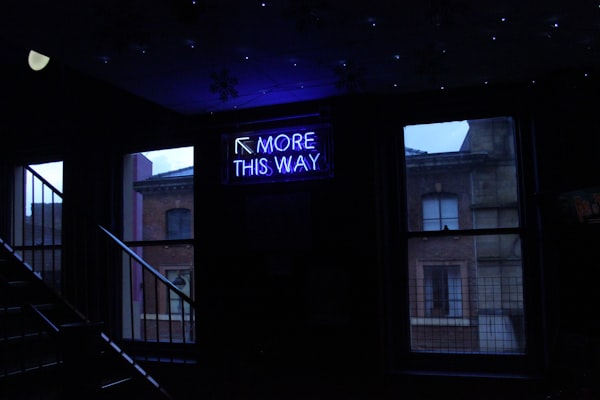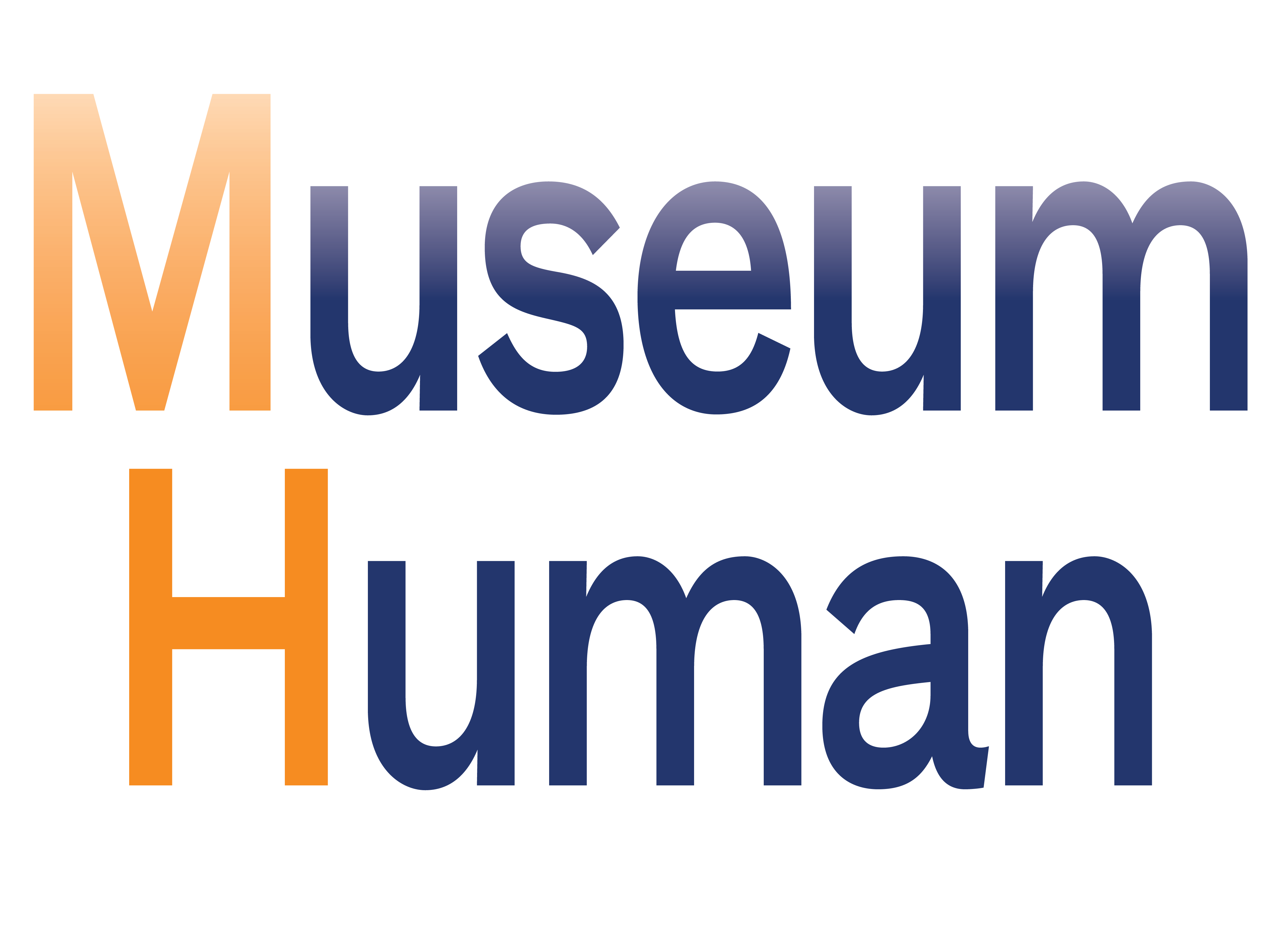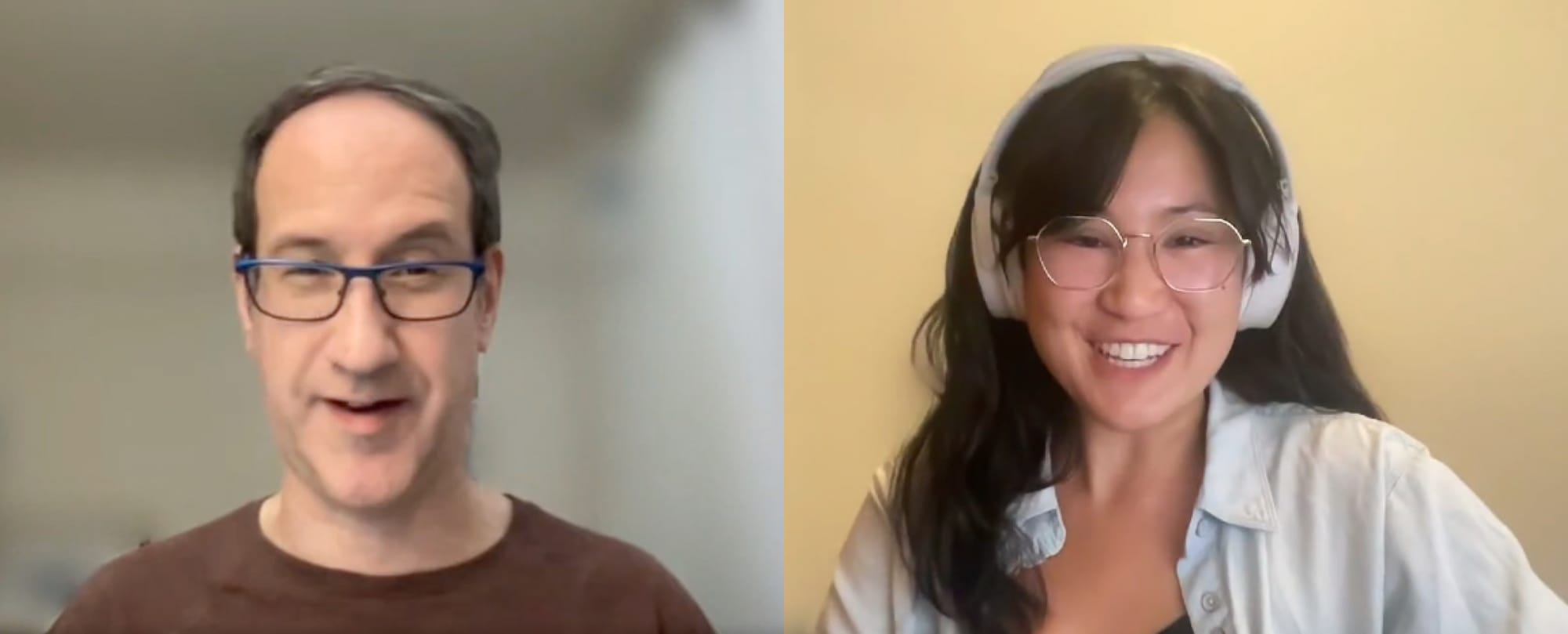
Museums may not get enough attention in this economy—but they may be important canaries in the coal mine.
If you're reading this and not a subscriber to Museum Human, consider scrolling to the bottom and signing up now—it's free and is the only way to read the site's longer weekly post on the organizational culture of cultural organizations and to learn about upcoming special subscriber-only events.
One: Esteemed museum leader and researcher Robert R. Janes sent me a link to this important article on authentic change in museums. This paragraph gives a sense of the piece:
Museums of all kinds are in a position to invent a new future for their communities by creating an image and a story of a desirable future – the essential first step in its realization. Joanna Macy, a Buddhist scholar and activist, calls this story the Great Turning – “the transition from a doomed economy of industrial growth to a life-sustaining society committed to the recovery of our world” (Macy and Johnstone 2012: 26). It is time for museums to honour the public trust that has been gifted to them and participate in the creation of this new story.
This made me think of the ecosystem metaphor and rewilding concepts of org culture guru Stowe Boyd. Here's more from Janes:
This persistent, maladaptive behaviour reflects an elemental misunderstanding that plagues the organization and management of museums. An ecological metaphor is useful in examining this dysfunction, as ecology is about the relationships between organisms and their environments – dependent, independent, and interdependent relationships. (Janes 2016: 379). Museums have built their survival on being both materially dependent (for their economic well-being) and subjectively independent, as exemplified by commonplace comments such as “give us the money; we know what to do” or “you can’t measure our performance because we have special missions.” In the process of overlooking the meaning of interdependence, museums have created their own marginalization.
It is time to forge an ecology of museums that recognizes that a broad web of societal relationships is the bedrock of successful adaptation in a complex, and increasingly severe, world. The lack of interdependent relationships among most museums is an increasing liability, and being valued for ancillary educational offerings and leisure entertainment is no longer sufficient to ensure a future for museums. ...
Among Janes's prescriptions:
5. Create new organizational designs. - Although rarely discussed, how you work directly affects what you do. There is an urgent need to abandon hierarchy and replace it with new organizational designs, based on self-organization and authentic personal agency.
6. Foster personal agency and end the exploitation of museum workers - personal agency refers to the capacity of staff to take action in the world, irrespective of their positions. The relationship between workplace and personhood remains largely unrecognized, unexplored, and often abusive in museums.
Janes then detailed the pandemic relief received by the museum sector, yet the field still cut nearly 15,000 jobs. If we don't believe that better museums can help lead to a better world, we're lacking in necessary imagination.
Two: Nonprofit leader Paul Bowers blogged about a report on the indirect costs of nonprofit institutions; it was an interesting dive into the way that not just salaries, but the cost of getting the everyday work done, is still so rarely captured:
The report talks about adding admin tasks to delivery staff, just so they can be funded. This is a real issue. What I would add, though, is the effect on psychology of staff of the endless starvation cycle and underinvestments in improvements.
(I wrote about scarcity and growth in museums back in 2020.)
Bowers lists the many reasons talented individuals leave museums, stagnate in their careers, or won't join the sector in the first place. Thus:
So effectively, many NFPs [not-for-profits] only function by applying extractive practices on their talent. The pernicious extraction, though, is hope. Many NFP employees — and Boards, and leaders — have become so accustomed to this relentless, consistent underfunding that they lost hope of it ever changing. Gallows humour abounds, with a shrug of ‘what can you do, huh?’.
Bowers lists some of the results among staff, which readers of this blog know all too well. We end up with many staff who (it's such a good list I'm reproducing it here in its entirety):
are resistant to change (‘it’s always been like this’)
see their personal career management (eg training) as something they have to do for themselves
tolerate of poor practices from managers, board, stakeholders, partners — either through ignorance that it can be better, or through fatalism that nothing ever changes
are so motivated by the passion of the Cause that they are sacrifice their wellbeing (and many would say that managers, CEOs and Boards tacitly encourage this)
Get into a mindset of embattled groupthink and resist alternative ways to deliver the mission (surplus-generating activities with different revenue models, for instance)
This isn't just a funder problem, but a structural problem. Read the whole piece.
Three: Speaking of museum funding, this piece from the Nonprofit Times detailed how the recovery (that's like so 2021!) has been slower for nonprofits than the overall economy.
Four: Someone wrote a new book about the resilience of museums, but also the sector's need to step up and confront crises. Talk of resilience usually makes my ears bleed, because the target is personalized solutionism to structural problems, but the book is more about the sector than its workers. Check out this review in the Guardian.
Five: Anne Helen Petersen gave this talk to an association of academic librarians, but noted that it applies to any "passion" field. So museum folks should take notice:
And this is where Doris Santoro’s conception of demoralization becomes salient: it’s not just that you’re burnt out, and feel like you could make a few changes and come back and do your job well. Professional demoralization is the dawning realization that there is no longer a way to do your job in a way that feels moral or just — not for yourself, not for your coworkers, and not for the people you serve.
I think "moral or just" is a good description of how museum workers want to feel about their jobs and institutions. (I reviewed Petersen's recent book Out of Office, written with her partner Charlie Warzel, earlier this week.)
Six: This piece isn't about museums per se, but it reminded me of my writing about how not having the answer in a museum workplace is so unthinkable in our org culture (here and here). So what are you supposed to say instead of "I don't know"? It's an interesting piece, but I still wonder, why do we need to sound better?
Seven: You didn't think I could go an entire LOTW without a Harvard Business Review article, did you? I was reminded of my take on rock stars when I read this piece on leaders rewarding toxic producers. In museums, those are rainmaking department heads and influential curators who deliver for their trustees with collections, exhibitions, and publications for their museums.
Eight: I thought again of my post on rewilding when I read this Stowe Boyd post about Airbnb's new remote policy (also covered in Quartz). Considering the company's controversial (cough, cough) place in the discussion about unaffordable neighborhood housing, I've been surprised by how often Airbnb has been hailed in the org culture field for progressive internal practices. The remote policy states, quite sensibly:
Today, we’re announcing that Airbnb employees can live and work anywhere. Our design for working at Airbnb has 5 key features:
1. You can work from home or the office—whatever works best for you
2. You can move anywhere in the country, like from San Francisco to Nashville, and your compensation won't change
3. You have the flexibility to live and work in 170 countries for up to 90 days a year in each location
4. We’ll meet up regularly for team gatherings. Most employees will connect in person every quarter for about a week at a time (some more frequently)
5. To pull this off, we'll operate off of a multi-year roadmap with two major product releases a year, which will keep us working in a highly coordinated way
Why did we come up with this design? The world has become more flexible. Our business wouldn’t have recovered as quickly from the pandemic if it hadn’t been for millions of people working from Airbnbs
We also had the most productive two-year period in our company’s history—all while working remotely
Companies will be at a significant disadvantage if they limit their talent pool to a commuting radius around their offices. The best people live everywhere
But there’s a tension. The most meaningful connections happen in person. Zoom is great for maintaining relationships, but it's not the best way to deepen them. And some creative work is best done in the same room
The right solution should combine the efficiency of Zoom with the meaningful human connection that happens when people come together. Our design attempts to combine the best of both worlds
I've come around to admitting that "meaningful connections" do happen onsite in museum workplaces—even if these aren't the mythical watercooler conversations. It's good to see Airbnb acknowledging this without dismissing the advantages chosen by remoters. (Boyd also mentioned hotels creating special midweek remote-worker packages for all the people looking for alternative hybrid arrangements.)
Nine: Cory Doctorow had this Twitter thread on the explosion in machine learning applications (unrolled here), important for anyone (especially museum knowledge workers) who still thinks that automation is about robots that can't take our jobs because they can't curate an exhibition or set up an educational program. It's more than that, folks, and institutional leaders are getting a LOT of sales pitches to try their AI/ML (my new shorthand for artificial intelligence and machine learning) out. The robot won't be taking your job as much as it'll make your job seem unnecessary in a data-driven way. Watch out.
Ten: HBR lauds leaders with "positive energy," which is fine, but do these leaders actually create more work for everyone? Positive energy usually means a positive increase in projects without old ones being properly sunsetted.
Bonus: I couldn't keep out these two articles from different New York magazine channels since they so perfectly encapsulate the "over or not" pandemic mindset we're seeing in many areas of this country (supposedly-deep-blue NYC included). First, there was a Grub Street piece on a return to post-ish-pandemic excess in the form of martinis and an anti-wellness backlash.
The counterpoint came in this piece in Curbed, where the writer, who has multiple sclerosis, clearly stated that the pandemic was in no way over for them or other people with (or caregiving for someone with) chronic health issues. Since, as I've mentioned elsewhere, I live with ongoing pandemic anxiety/dread that many people would call unreasonable, this article really resonated with me. I could quote the whole thing, but this will do:
Cases are still up across the city. … The official response so far is: "As you were."
"As I was" in a pandemic, though, only really worked with some acknowledgment from the state and city that the pandemic existed. Nothing draconian. Indoor masking and vaccine mandates seem to work well when we see cases beginning to tick up. They give people who are at higher risk of getting sick access to public space. … Without real support from leadership, what’s left for people at high risk (or people who don’t have child care, or people who just don’t feel like rolling the dice) is only obsessive, internal self-calibration. (And eerie supplementary guides on how to assess your own risk: A recent Times newsletter touted seven ways to lower your chance of exposure, like tips to keep clutter off your desk.)
Existing in this phase requires dexterity: You need to make choices about what feels safe, or at least like an acceptable risk, but also how you talk about what you’re doing. Does a tone exist to convey that I’m the right level of cautious, not unbearably so? Careful but not addicted to the pandemic? Discussing risk is okay, to an extent, but don’t act like it’s dire. A person can be nervous but can’t seem scolding.
I could go on, but if you dare, you should read the comments, where you see the counter-counter-argument in all its glory: the author was called (by a couple of commenters, but wow the arguers do need to keep repeating themselves) mentally ill, wanting mask mandates forever, hysterical, anti-social, anti-human, claiming privilege, demanding a police state, using victimhood to take advantage of people's empathy, and so on.
I'm worried that this pendulum is going to keep swinging further in the "it's over" direction, as our various crises—of which war, inflation, a sinking stock market (in which so much retirement "wealth" is tied up), and other things are only symptoms—make everything just meaner. How long before not only are people told to die on their own time and leave most others alone, but the government actually assists in the process?
Liberation
Sorry (not sorry) to end on a downer, but I think we in museums have to liberate ourselves from the notion that our work and our sector are automatically good. (Maybe the Airbnb remote policy will move the needle on trust-filled remote practices.) We are as we do, and if our work and our institutions aren't doing good by its people, especially those most vulnerable, then we have a long way to go.
If you're reading this and not a subscriber to Museum Human, consider signing up for a free subscription below—it's the only way to read the site's longer weekly post on the organizational culture of cultural organizations to learn about upcoming special subscriber-only events. Thank you for reading!
cover image by Miguel Orós / Unsplash [description: a neon sign, reading "more this way," with an arrow pointing up and to left, by a staircase, in a dark room]

Links of the Week: May 6, 2022: Museums and More by Robert J Weisberg is licensed under a Creative Commons Attribution-NonCommercial-ShareAlike 4.0 International License.






